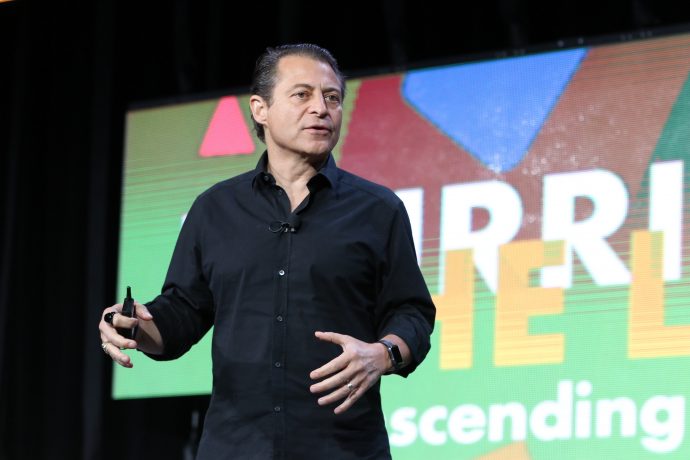Our friends at PLASTARC attended the recent CoreNet Global Summit 2017 in Seattle, Washington, November 3 – 7 and were kind enough to share their notes with us. This year’s theme, Blurring the Lines: Transcending Boundaries brought together a multitalented group of almost 3,000 CRE professional to discuss issues whether physical or virtual, real or perceived, that become the barriers that separate people and places are widely recognized as part of our personal and professional lives.
The General Session opening address, “Exponential Technology: Innovation and Disruption on the Road Ahead” was delivered by Peter Diamandis, Co-Founder/Vice-Chairman at Human Longevity, Inc. on Monday, November 6th. The speech discussed how disruptive innovations, with their technologies and advancements alter and improve the way we conceptualize our work as brokers, real estate agents, architects, engineers, workplace strategists, coworkers, and everyone else interested in the study and practice of finding and achieving better workplaces.

Over the course of the summit, attendees could choose from many exciting sessions. For example, Melissa Marsh, Founder and Executive Director of PLASTARC and Senior Managing Director, Occupant Experience at Savills Studley, Nick LiVigne, Manager – Workplace Transformation at Verizon, Robert Middleton, Director of World Wide WPR at Mozilla Corporation, and Toma Barylak, Head of Global Real Estate + Workplace at Unity Technologies collectively presented their take on the changing nature of the workplace. Entitled “From Coworking to Crowdsourcing,” this conversation focused on three technology companies at different stages in their real estate and workplace strategy lifecycle. The presentation also highlighted the metamorphosis that all types of businesses are undergoing in response to a changing economy and workforce. Nick’s workplace transformation efforts at Verizon have been disruptive by re-appropriating some of the 1.05 million square feet of underutilized real estate and re-purposing it as coworking space. Robert described how he uses crowdsourcing to accommodate the needs of his employees: both those who work on-site and those who work digitally. Toma’s organization is a growing tech company with an expanding real estate portfolio. Each company is choosing new and innovative paths to develop an infrastructure that will support their workforce and the tools they use to do their jobs.
Other sessions covered topics as varied as political intelligence, the science of cocktail parties, and even the potential for integrating XR tools into the design process to engender greater empathy on the part of designers. “ChChChChanges: Transformative Dynamics with Virtual Reality” was presented by Kelly Funk and Guy Messick of IA Interior Architects and included a demonstration in which members of the audience were invited up to experiment with VR equipment. The live exhibition also featured a house that was being sold by brokers to clients and was itself illustrative of the growing prevalence of XR technology in the word of sales.

The conference also included the finalist’s presentations for the Academic Challenge 3.0. These consulting teams reported on the results of their hackathon which set out to reduce risk in a client company’s worldwide physical footprint (i.e., real estate portfolio). This year’s finalist’s included Columbia University, TU Delft, and Emory. The hackathon presents the opportunity for students to come together and collaborate on some of the real-life problems facing professionals in the real estate industry today. Subject matter included portfolio diversification and risk analysis and assessment. At the presentation student audience participants asked some of the most interesting questions of the conference. For example, during “Transcending Boundaries: The Globalization of Corporate Real Estate” on Monday morning, a student from the University of Washington asked a question about managing risk in a transnational portfolio that stimulated thoughts on stage and in the audience alike.
The thematic thread of this CoreNet summit was entirely clear: disruption. This concept, in its most generous and beautiful sense, is about breaking from the set path and following something novel. Every event session was full of the possibilities of new technologies, new sales techniques, and new modes of working—while remaining mindful that these innovations, exciting though they may be, would interrupt the way we do business forever.


